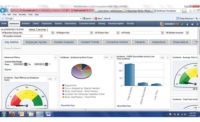As part of the process of continual improvement, it is important that all incidents and accidents are recorded and investigated, and actions are taken to prevent or reduce the chance of recurrence. To ensure continual improvement, it’s imperative to consider safefty in all aspects of an organization.
Automated Incident Management tools help to prevent or reduce incident occurrence to improve overall safety in the workplace.
Companies can treat safety as an all-the-time job by incorporating risk management into the incident reporting process. Risk adds a new dimension to data. It helps companies analyze, prioritize and catch problems before they start.
Incorporating risk
Integrating risk processes benefits incident management because:
High-risk events are flagged: Tools like the Risk Matrix allow users to quantify risks associated with individual incidents. Once each incident has been assigned a risk level, companies can filter and search for the highest-risk incidents and then initiate the corrective action process. Flagging high-risk incidents ensures that these incidents are not dealt with in the order they were received, rather they can be addressed in manner of criticality and ultimately solved in a timely manner.
Verification is risk-based: Once a corrective action is set in place, companies must be able to determine when to close it out. Many companies will close out a corrective action once the prescribed corrective action is completed. However, they are missing a crucial step—risk-based verification. Before marking corrective actions as complete, the risk matrix can be used to ensure the action has been reduced to acceptable levels. This means companies must have a policy in place that deems what level of risk is acceptable, along with a properly vetted risk matrix. Adding risk as a final verification step in the process allows companies to ensure that the corrective action was truly effective. If risk isn’t reduced to acceptable levels, it can be fed right back through the corrective action system. This process leads to a continuous reduction of risk.
Organizations can track leading indicators: Safety should not be thought of as reactive process. In fact, it should be focused on events that have yet to take place rather than ones that have already happened. Tracking leading indicators like near-misses, which provide valuable data about where incidents might occur in the future, is one way to do this.
It enables companies to understand the larger context: Incident management linked with risk management allows users to go beyond individual functions and capabilities by creating a larger closed-loop process that continuously reduces risk throughout the entire organization.
The process includes:
- Identifying key metrics and leading indicators you will use to measure success.
- Regularly reviewing policies and planning documents within a secure document control system.
- Tracking employee training compliance to ensure workers are prepared to handle any changes to processes, people or equipment.
- Recording hazards within a centralized risk register and assessing the risk associated with each.
- Adding new controls on a regular basis that address incidents, observed hazards and regulatory compliance gaps.
- Monitoring control effectiveness to see where adjustments should be made.



